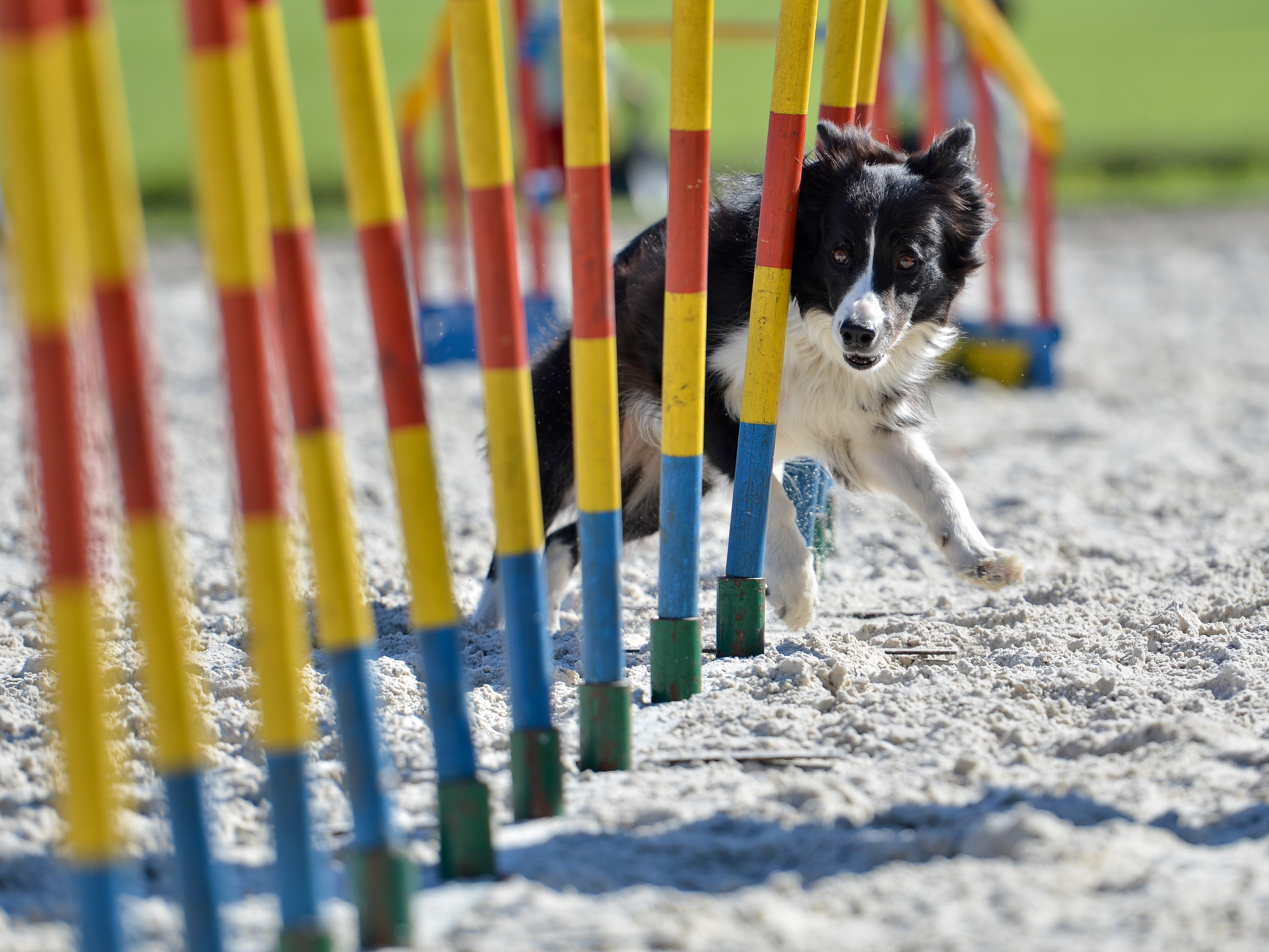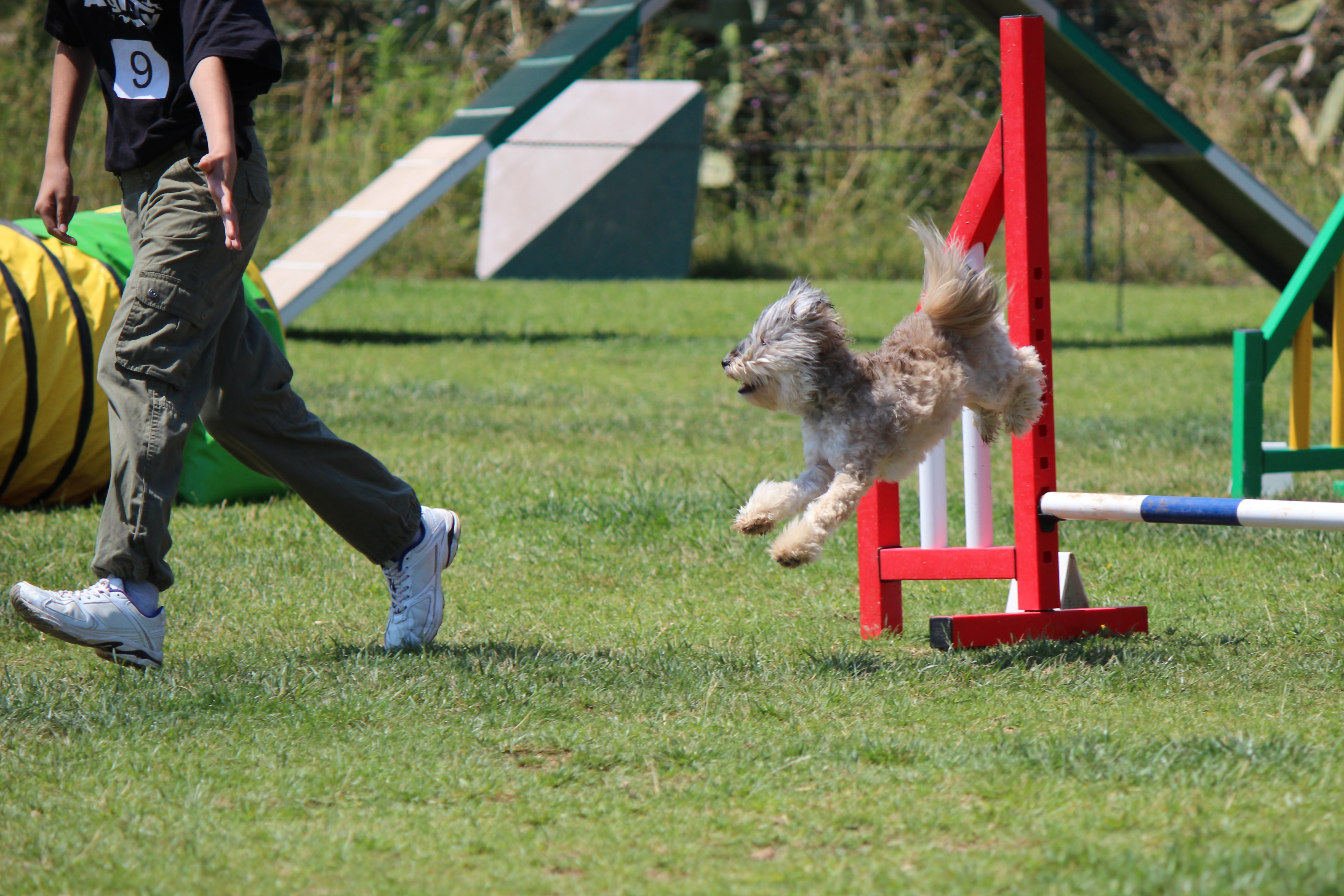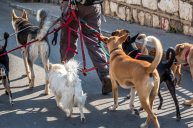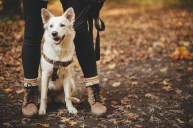It's time to actually tire your dog out. Do you have a hard time getting your dog to leave the park after an hour of playing fetch? Does your dog look at you suspiciously when you get ready for yet another mandated run?
For dog owners, there's often a gap between activities that are good exercise for the dog and sports that are fun for the owner. Running and walking are good ways to help your pet burn some energy, but neither provide much of a mental challenge for your dog. If you're looking for a new sport that keeps both you and your dog on your toes (mentally and physically), consider dog agility.
History
Dog agility involves timed obstacle courses that dogs complete while following their handlers' commands. There are no treats or rewards, only verbal cues for the dogs. It's fast-paced and exciting to watch, but it's even more fun to learn and practice! Agility courses consist of a variety of obstacles, often including weave poles, seesaws, tunnels, jumps, and pause tables, that dogs must navigate off-leash.

The sport is only a few decades old. It was initially created to fill time between events at dog shows, but training dogs to race through obstacles drew heavy interest from dog owners. Today, dog agility is widely popular both at the competitive level and as a fun hobby for dogs and their owners to do on their own schedules.
Dog agility has many benefits, including increased health (for dogs and handlers), improved behavior in dogs, and a stronger bond between dogs and their owners. You don't have to be athletic or have any previous experience to get started with dog agility or to be great at it. Dogs of all ages and breeds as well as owners of all ages and abilities can participate in this sport; there's even a division for youth handlers.
Behavior
Many dog owners know daily exercise is good for dogs, but agility training combines exercising with a task and the challenge of learning new skills, which stimulates the dog's brain. Dogs were bred to work alongside humans, and they thrive on having a job to complete. Bored dogs tend to have more behavioral issues than dogs who are challenged with new problems to solve; misbehaving is a way for bored dogs to add variety to their routines. If your dog chews on furniture, doesn't follow commands, or destroys the house while you're at work, agility training's focus on basic obedience commands may help curb these behaviors.
READ MORE: 10 Games to Keep Your Dog Mentally Stimulated
Bond
The connections between handlers and their dogs are often much stronger than those between normal dog owners and their dogs. The time spent working on commands and moving through obstacles together helps bridge the gap between humans and dogs by making the two a team. In agility training, the dog and its handler work together to complete the course. Both have important roles to play: the handler must give clear commands, and the dog has to follow them.
Exercise
Dog agility training is a fun, creative way to improve fitness in both dogs and humans and to add weekly exercise into your routine. If the kind of exercise agility training requires will be challenging for you for any reason, but don't despair! Your instructor can help you accommodate any disabilities. Your level of commitment as a beginning handler can vary greatly depending on your schedule and whether you want to compete in events.
For most beginners, agility training requires attending a weekly class and reinforcing the learning for thirty minutes a day, which means it's not a very time-intensive activity. For those who want to get more involved with competition, the time requirements increase, but it's no more demanding than other sports or hobbies.
Can you create an agility dog course at home? Yes!
After you've taken classes and your dog understands the sport a little better there is agility equipment you can purchase and set up in your backyard. We talked about what a course consists so you should consider setting up a teeter-totter, use PVC pipes for the weaving poles and practice those handling skills between classes! Like many other dog sports, agility is all about body language and setting your dog up for success!

Read the entire article at eReplacement Parts...
Article written by Alison Hudson for eReplacement Parts
Have you ever tried to run agility with your dog? Let us know in the comments below!

Source: eReplacementParts.com
READ MORE: How to Build a Backyard Agility Course
WATCH NOW: Border Collies Are a Super Smart Dog Breed




